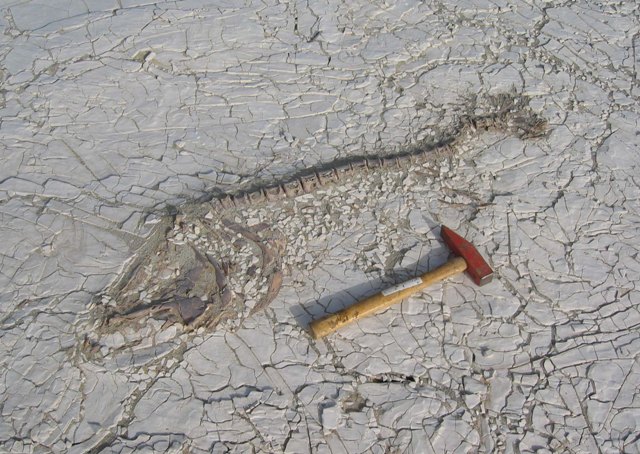Jul 1 2015
Researchers from Royal Holloway, Birkbeck and Kings College, University of London used satellite images to map abandoned shore lines around Palaeolake Mega-Chad, and analysed sediments to calculate the age of these shore lines, producing a lake level history spanning the last 15,000 years.
 Fossil fish
Fossil fish
At its peak around 6,000 years ago, Palaeolake Mega-Chad was the largest freshwater lake on Earth, with an area of 360,000 km2. Now today’s Lake Chad is reduced to a fraction of that size, at only 355 km2. The drying of Lake Mega-Chad reveals a story of dramatic climate change in the southern Sahara, with a rapid change from a giant lake to desert dunes and dust, due to changes in rainfall from the West African Monsoon. The research, published this week in the journal Proceedings of the National Academy of Sciences of the United States of America confirms earlier suggestions that the climate change was abrupt, with the southern Sahara drying in just a few hundred years.
Part of the Palaeolake Mega-Chad basin that has dried completely is the Bodélé depression, which lies in remote northern Chad. The Bodélé depression is the World’s single greatest source of atmospheric dust, with dust being blown across the Atlantic to South America, where it is believed to be helping to maintain the fertility of tropical rainforests. However, the University of London team’s research shows that a small lake persisted in the Bodélé depression until about 1,000 years ago. This lake covered the parts of the Bodélé depression which currently produce most dust, limiting the dust potential until recent times.
“The Amazon tropical forest is like a giant hanging basket” explains Dr Simon Armitage from the Department of Geography at Royal Holloway. “In a hanging basket, daily watering quickly washes soluble nutrients out of the soil, and these need to be replaced using fertiliser if the plants are to survive. Similarly, heavy washout of soluble minerals from the Amazon basin means that an external source of nutrients must be maintaining soil fertility. As the World’s most vigorous dust source, the Bodélé depression has often been cited as a likely source of these nutrients, but our findings indicate that this can only be true for the last 1,000 years,” he added.
The field work carried out by Professor Charlie Bristow, Professor Nick Drake and Dr Armitage was made possible by Royal Geographical Society grants for expeditions to Chad in 2005 and northern Nigeria in 2008. Additional sample analyses were funded by the Natural Environment Research Council.